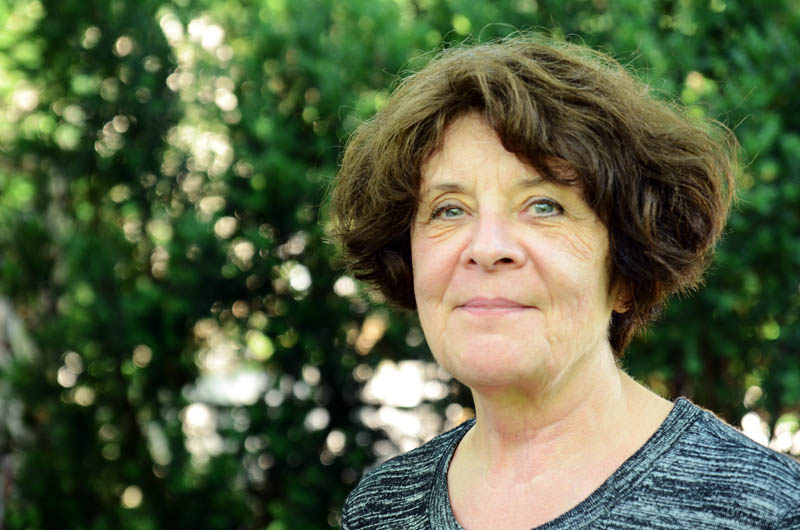Overtreated: I Received Treatment for Cancer I Never Had
May 10, 2017 - Viewpoints
by Samantha Relich for Choosing Wisely Canada
A patient was told she had thyroid cancer, only find out the diagnosis that led to the removal of her thyroid should not have been called cancer at all.
Overtreated: I Received Treatment for Cancer I Never Had
May 10, 2017 - Viewpoints
by Samantha Relich for Choosing Wisely Canada
A patient was told she had thyroid cancer, only find out the diagnosis that led to the removal of her thyroid should not have been called cancer at all.

Renée Pellerin believes she could still have half of her thyroid. She also believes the cancer that led to the removal of her thyroid should not have been called cancer at all.
Before the surgery that removed her thyroid in 1994, Pellerin was passed between doctors and underwent a battery of testing – and frustration – before an endocrinologist arrived at a diagnosis. He recommended surgery after discovering a small mass in one half of her thyroid that was not responsive to non-surgical treatments.
“He strongly suspected, but wasn’t sure, that I had a tumor,” says Pellerin. Despite the fact that needle biopsies didn’t clearly indicate cancer, the endocrinologist directed Pellerin to a surgeon.
Before her operation, the surgeon advised her that he would remove the half of her thyroid that contained the mass and perform a biopsy on it in the operating room. If it looked like cancer, the surgeon explained, he would remove the other half of her thyroid on the spot. When Pellerin woke up from the anesthesia her entire thyroid had been removed.
In the years since her surgery, Pellerin, a former CBC health journalist, has learned a great deal about the operation and the treatment that followed. She describes herself as having been over-treated, but also says it could have been much worse.
“I’ve been told by one of the experts that I’ve spoken with that doctors got even more aggressive with the treatment of thyroid cancer in the late 1990s then they were when I had mine removed,” she explains.
But in April 2016, Pellerin got new insights into her treatment twenty-two years ago. The biggest revelation was that her cancer should probably never have been called cancer at all. The revelation came as a shift occurred in the naming rationale for certain types of thyroid nodules – specifically a non-invasive nodule, meaning that the tumor was contained within a capsule and had not spread to surrounding tissue. In these specific instances, experts recommended calling them “non-invasive follicular thyroid neoplasm with papillary-like nuclear features” or NIFT-P. In layman’s terms: not cancer.
Pellerin learned about the rationale for the renaming in an issue of Jama Oncology, in an article written by Dr. Yuri Nikiforov, a thyroid pathologist from the University of Pittsburgh, and his research group. “I got a hold of the paper and exchanged a couple emails with him,” she says, she also sent Dr. Nikiforov her pathology report. He told her he couldn’t be positive without examining the tissue, but said she likely had had NIFT-P.
For Pellerin, that was a huge realization. “I don’t have any lingering bitterness or regret, they did what they thought was the best thing at the time,” she says, but it did reinforce her perspective that the doctor’s on her case were overzealous in her treatment. It meant that she could likely have kept half her thyroid. And, with half a thyroid intact, she also could have avoided the radioactive iodine treatment which relegated her to isolation for three days, too radioactive from the pill she swallowed to come into contact with other people.
For Pellerin the Jama Oncology article was only the latest in revelations about her treatment. The new information came a couple years after Pellerin discovered she had also been on unnecessarily high levels of replacement hormones for twenty years. “I didn’t know until my doctor retired and I saw another endocrinologist who said my levels were way too high,” says Pellerin. Her doctor informed her that her previous doctor’s approach was outdated – high doses were only recommended for the first five years after surgery at which point they could be tapered down.
Her doctor changed the levels and Pellerin immediately noticed a difference. “I used to get anxious easily about things, and sometimes didn’t understand why. Hormones are very subtle. [On the lower dose] I noticed a very perceptible change,” she explains.
She’s insistent when she says she has moved on from her treatment without regret. “I guess the new information just confirmed what I had kind of always expected. I didn’t have anything that was really threatening to me.”
She hopes her story can encourage others to ask more questions. “Maybe people will hesitate before they approach their doctor for treatment. And maybe they’ll ask for information about the treatment they’re being given.”
Pellerin has had a lot of opportunity to reflect on her treatment. She says it’s made her realize how much the healthcare system has changed. “I think the lesson for me is what we’ve learned in many aspects of medicine: that more is not always necessarily better and that sometimes watching and waiting is the best approach.”
